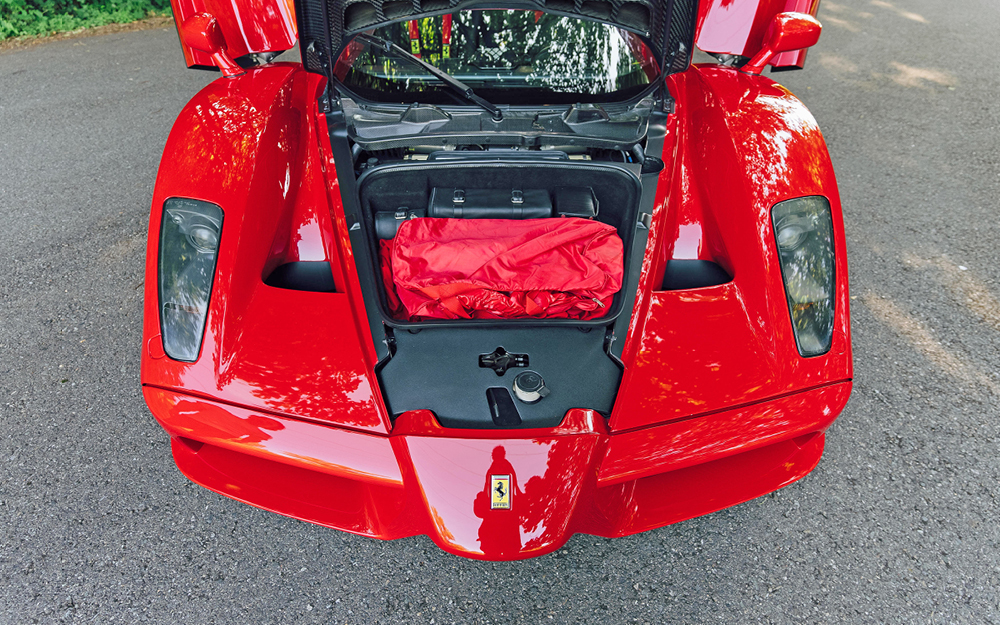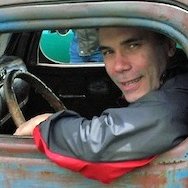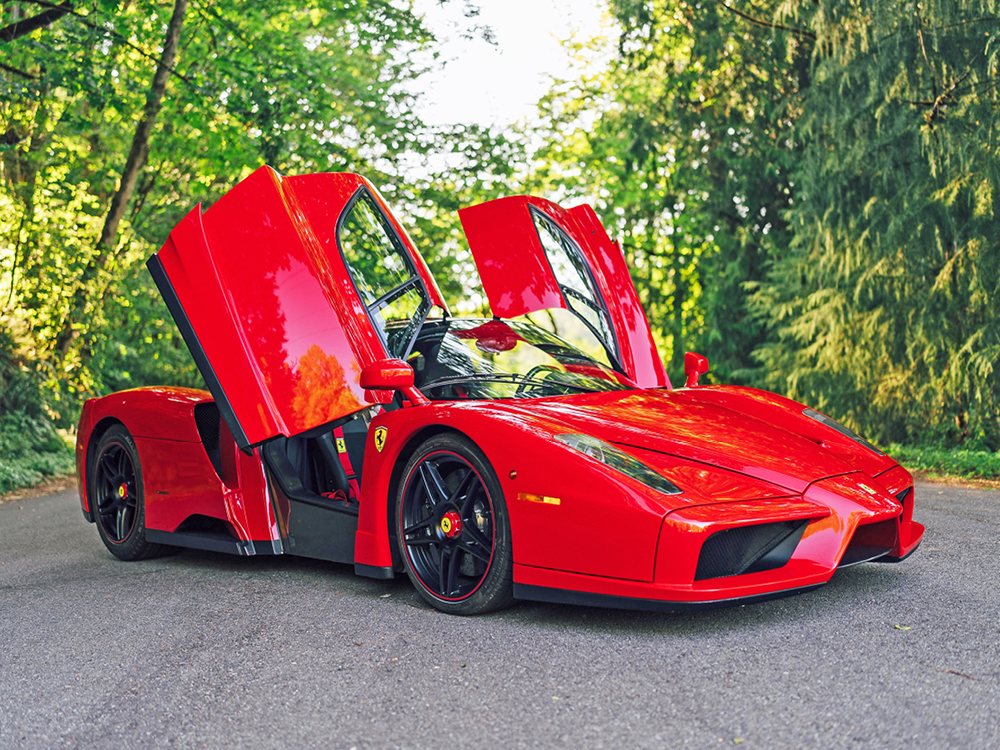The Ultimate Memorial to a Company Founder
With all the superlative cars Ferrari has offered over the last quarter-century, the automaker refers to just five particular models as its supercar series: 288 GTO (1984-1987), F40 (1987-1992), F50 (1995-1997), Enzo (2002-2004), and La Ferrari (2013-2018). These were the best of the best, the elite low-production models showcasing the automaker’s top racing-derived tech in their time.
The Enzo, of course, was named for the automaker’s founder, who died in 1988. You could accurately call it a “hypercar,” one that was packed with technology and features derived from Ferrari Formula One racecars.
Ferrari built just 400 Enzos and sent 111 of them to the U.S. Bonhams is offering one of those at its Monterey Car Week auction held at The Quail, A Motorsports Gathering. The pre-sale estimate is $2.9M-$3.4M
We suspect that this Enzo was enjoyed in a manner that would have pleased the founder.
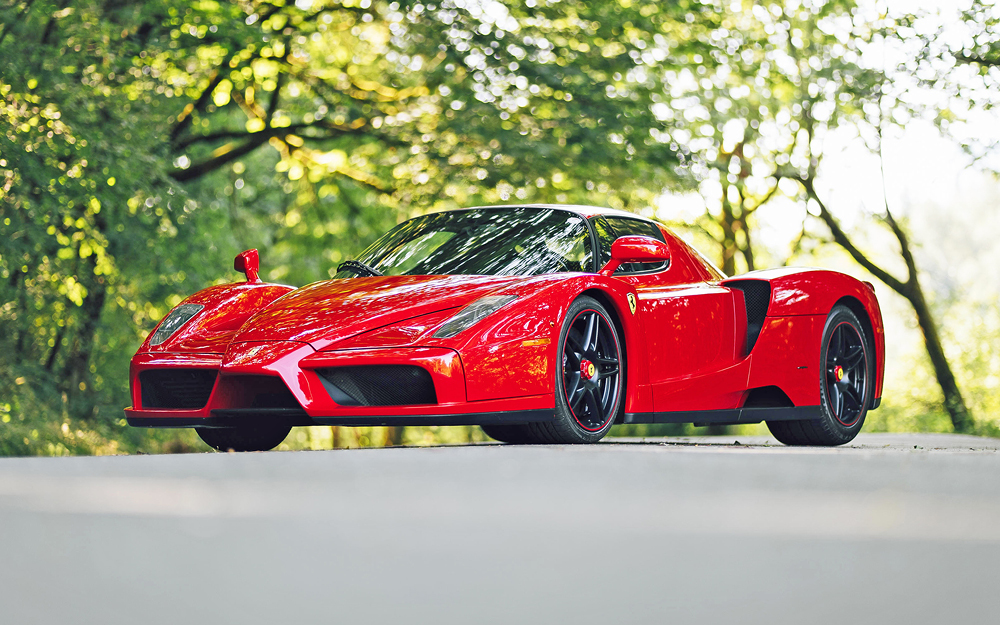
F1 Chassis Tech
Like all models in Ferrari’s supercar series, the Enzo was a mid-engine machine. Borrowing from F1 experience, Ferrari built the Enzo from carbon-fiber and aluminum honeycomb “sandwich” panels. As a result, the Enzo was exceptionally light for such a supercar at just around 3,000 pounds.
Like F1 racers, the Enzo’s chassis employed a form of double wishbone suspension with transversely mounted, pushrod-operated dampers. The Enzo also used Skyhook electronically controlled adaptive suspension, while this technology had been banned from F1 racing since the late 1990s.
Ferrari’s announcement of the Enzo in mid-summer 2002 serendipitously coincided with Michael Schumacher winning that year’s Formula 1 Drivers’ Championship, his third in a row for Ferrari. The superstar driver had contributed to the Enzo’s development, notably providing input on refining its driving manners.
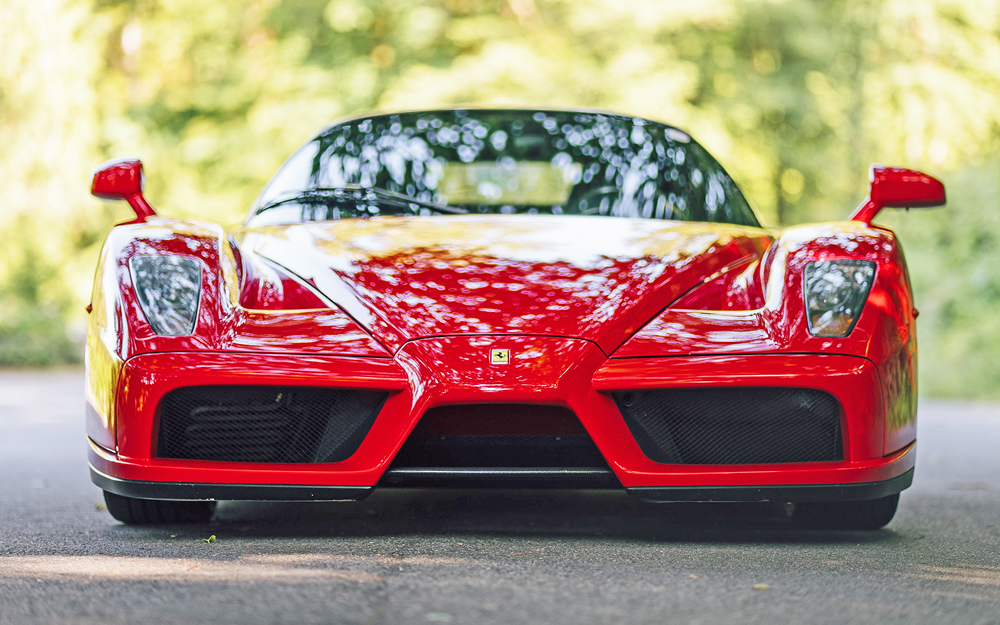
A V12 for Enzo, of Course
It was in the choice of powertrain where the Enzo notably departed from F1 rules of the time, which called for a 3.0-liter naturally aspirated V10. Ferrari, of course, never put a V10 in a production car. Rather, the Enzo’s engine type honored the founder’s legacy. Enzo (the man) reportedly became smitten with V12s engine after hearing, as a youth, the sound made by the one in Packard’s 1916 “299” racecar. The V12 configuration later became a foundational element to the marque, and so, only a V12 would do for the car bearing his full name.
Ferrari developed a new 65-degree 6.0-liter V-12 for the Enzo, and this engine has since been used in all of Ferrari’s front-engine berlinettas and the La Ferrari. In the Enzo, the engine gave 651 horsepower at 7,800 rpm and 485 lb-ft. of peak torque at 5,500 rpm.
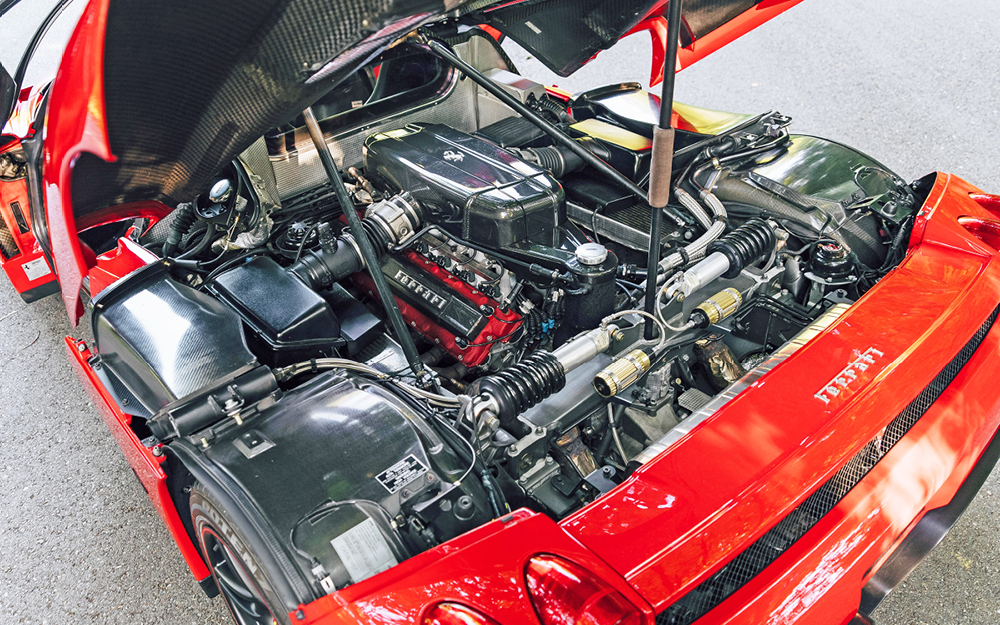
“A Big, Muscular Punch”
Torque was routed through a six-speed F1 robotized manual transmission. Unlike the unit used in other Ferrari road cars of the period, the Enzo’s had no automatic mode. All shifts, up or down, required used of the paddles behind the steering wheel. Gear changes occurred in 150 milliseconds.
Not surprisingly, the Enzo was a straight-line beast in its day at 3.5 seconds. The standing quarter-mile flew by in 11 seconds, and top track speed was an astounding 218 mph. Writing for Britain’s CAR Magazine, a stunned Mark Walton wrote: “The Enzo lunges forward so violently that it feels like it could cause brain damage – a big, muscular punch that makes your stomach lurch and your head reel with blood loss.”
Brembo’s then-new carbon-ceramic brakes delivered “staggering deceleration” according to Car and Driver’s testers, who applied similar descriptors for the Enzo’s overall performance.
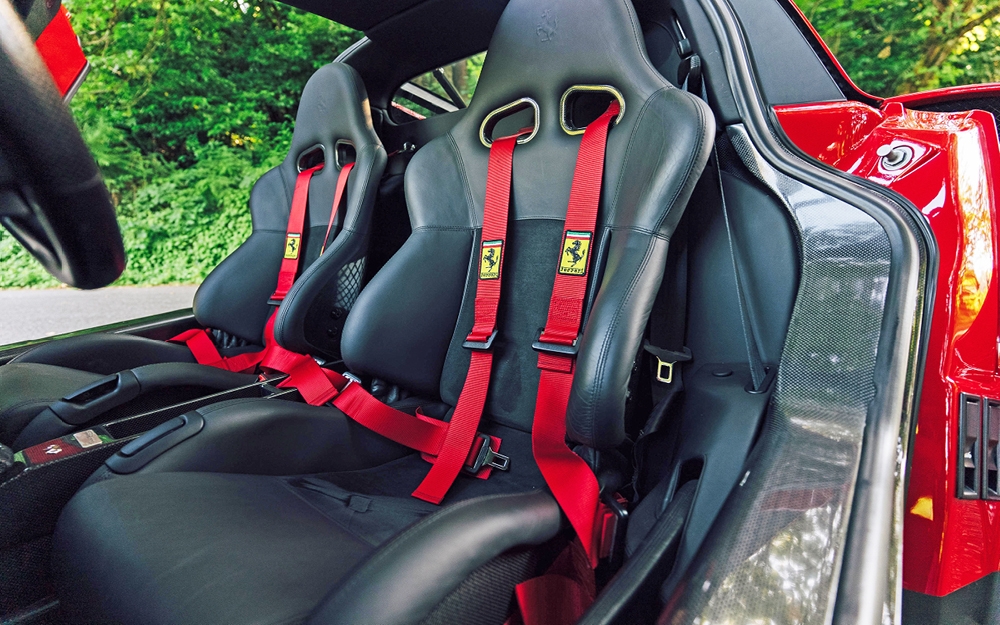
The F1 Look for the Road
The Pininfarina-designed Enzo mimicked the front-end appearance of the Ferrari’s F1 racer with its raised center section between two side air intakes for the radiators. Active aero features were not allowed in F1 racing, but the Enzo had them as a necessity for track driving stability. These included flaps ahead of the front wheels, which worked in conjunction with the small, adjustable rear spoiler and two rear diffusers to generate downforce.
The scissor-style doors that integrated roof sections were a nod to the 1970 Ferrari 512M endurance racer. Most Enzos were Rosso Corsa (red), with very few in black or yellow, and just one in white. Most of the Enzo’s interior surfaces were carbon fiber. Like Ferrari’s F1 racer, the Enzo grouped many of the car’s controls on the steering wheel, including those for reverse gear and traction control. Optional air conditioning was about the only concession to added comfort.
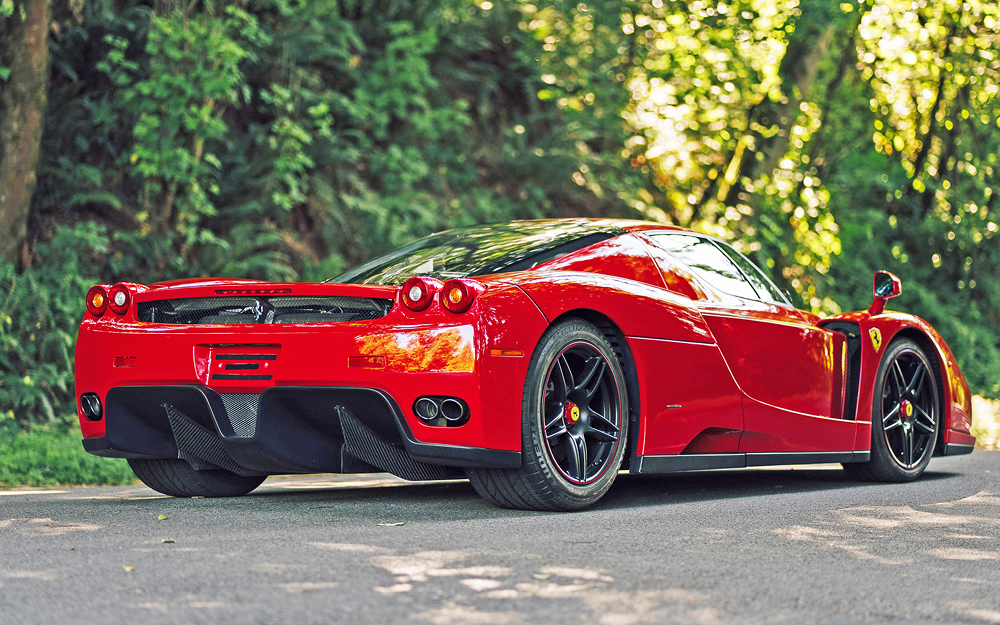
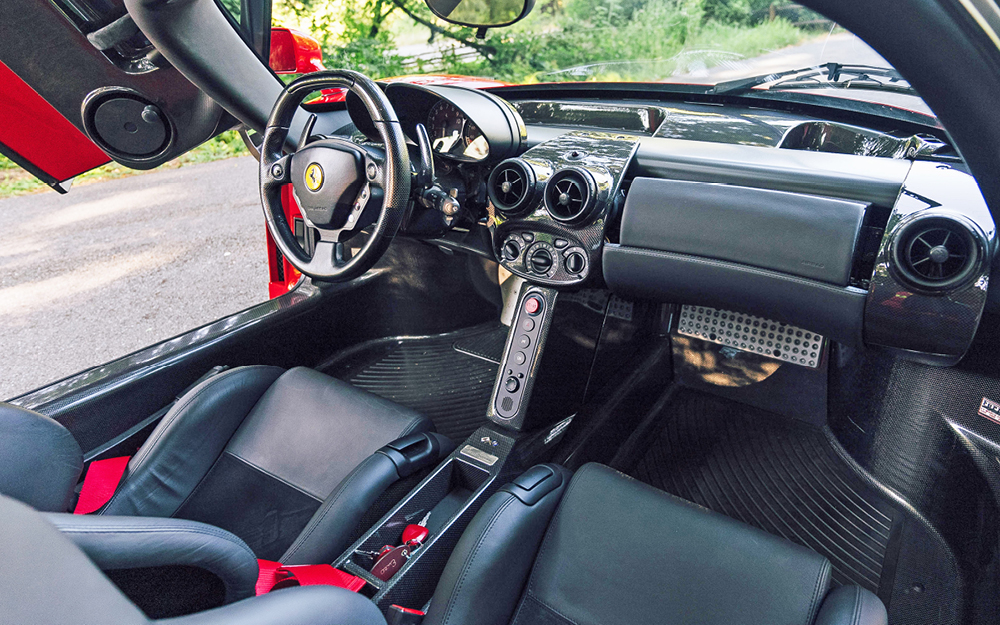
Keep Driving
We think Enzo Ferrari would be pleased that his namesake car offered by Bonhams did a lot of what the car was designed for: Driving pleasure. This red Enzo has accumulated nearly 17,000 miles under four owners. It earned full Ferrari Classiche certification with the “Red Book” included in the sale, and a comprehensive service was performed in January 2023.
When the car was new, the first owner had Ferrari respray it from its original Rossa Corsa (red) to black, including the wheels, and drove 1,105 miles in just five months before selling it. Under the second owner, a “technical issue” prompted Ferrari to replace the V12 engine under warranty. The third owner acquired the Enzo with just under 10,000 miles and took it to Germany for three years. The fourth had the car returned to its original color by Zanasi Group in Maranello, a Ferrari Factory Authorized Bodywork establishment. What would Enzo say to all of this? We think it might be something like, “Continua a guidare!”
